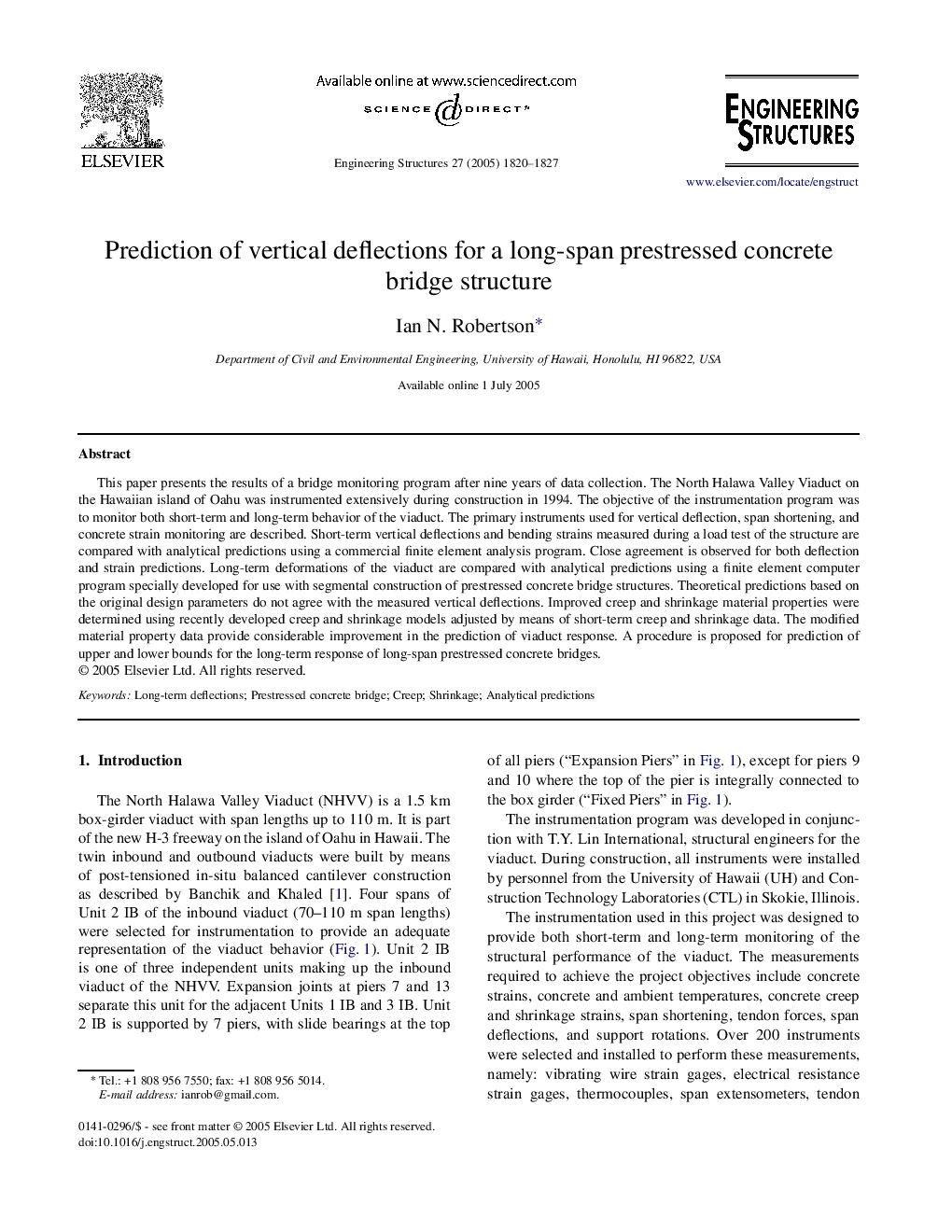| Article ID | Journal | Published Year | Pages | File Type |
|---|---|---|---|---|
| 10287055 | Engineering Structures | 2005 | 8 Pages |
Abstract
This paper presents the results of a bridge monitoring program after nine years of data collection. The North Halawa Valley Viaduct on the Hawaiian island of Oahu was instrumented extensively during construction in 1994. The objective of the instrumentation program was to monitor both short-term and long-term behavior of the viaduct. The primary instruments used for vertical deflection, span shortening, and concrete strain monitoring are described. Short-term vertical deflections and bending strains measured during a load test of the structure are compared with analytical predictions using a commercial finite element analysis program. Close agreement is observed for both deflection and strain predictions. Long-term deformations of the viaduct are compared with analytical predictions using a finite element computer program specially developed for use with segmental construction of prestressed concrete bridge structures. Theoretical predictions based on the original design parameters do not agree with the measured vertical deflections. Improved creep and shrinkage material properties were determined using recently developed creep and shrinkage models adjusted by means of short-term creep and shrinkage data. The modified material property data provide considerable improvement in the prediction of viaduct response. A procedure is proposed for prediction of upper and lower bounds for the long-term response of long-span prestressed concrete bridges.
Related Topics
Physical Sciences and Engineering
Earth and Planetary Sciences
Geotechnical Engineering and Engineering Geology
Authors
Ian N. Robertson,
